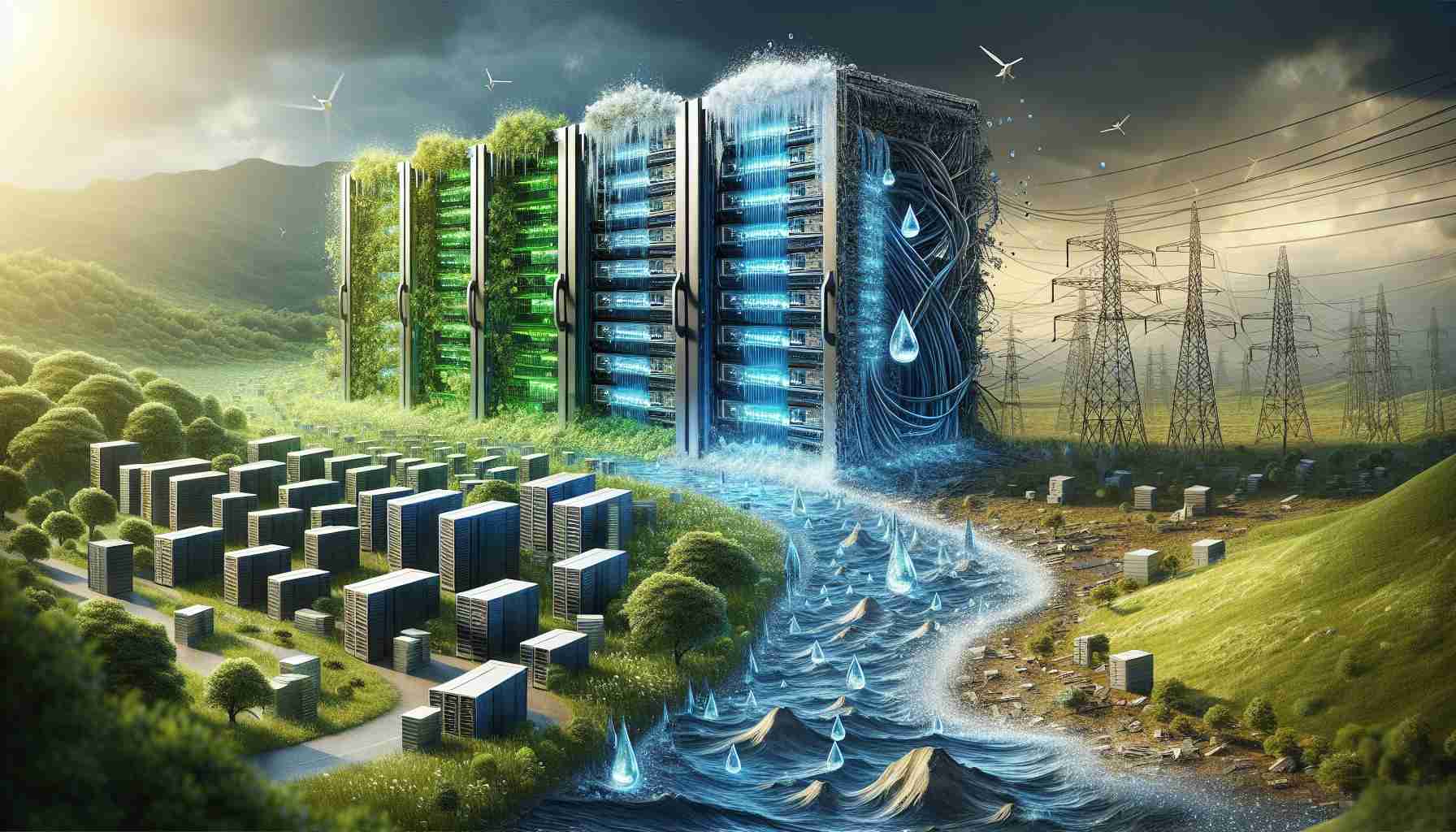Data centers supporting AI systems have substantial physical implications, extending beyond mere computational power. Across the globe, industrial buildings filled with cables, servers, and graphics cards form the backbone of what we understand as artificial intelligence. Acknowledging this impact, the OECD highlighted the significant water consumption in AI operations, revealing that tens of questions posed to advanced AI models might expend as much water as half a liter.
The thirst for resources doesn’t stop with water. Burgeoning electric demands are increasingly highlighted by industry leaders and researchers alike. Alex De Vries, known for his energy usage analysis through Digiconomist, raised concerns about AI’s energy consumption. Echoing this sentiment, innovators like Elon Musk have stressed that power supply, not chip shortages, now limits AI growth. Likewise, Amazon’s CEO, Andy Jassy, emphasized the insufficiency of available electricity to fuel new AI services.
Foreseeing this trend, the International Energy Agency (IEA) estimated that data center power usage due to AI could more than double by 2026, reaching over 1000 terawatt-hours, which is nearly equal to the annual consumption of Japan.
While updated regulations and technological progress are expected to mitigate the spike in electricity usage, the challenge remains formidable. Though gains in hardware efficiency have historically stabilized data center energy consumption, there is a prevailing fear that any such improvements might be offset by the push for more powerful and demanding AI models.
Companies are actively scouting new locations for data centers, searching for areas with ample electricity and water supplies to cool the heat-generating equipment. Destinations under consideration include neighboring Italy and Eastern Europe, indicating the scale at which the data infrastructure is expanding to support AI’s increasing appetite for resources.
Important Questions and Answers:
1. What are the main factors contributing to the environmental footprint of AI?
Most noted factors contributing to the environmental footprint of AI include the energy required to power data centers, the water used for cooling equipment, and the manufacturing and disposal of technology hardware.
2. How can we mitigate the environmental impact of AI?
Mitigation strategies include improving energy efficiency in data centers through advanced cooling techniques or using renewable energy, designing AI algorithms to be more power-effective, and implementing regulations to manage resource use.
3. Why are companies looking to relocate their data centers?
Companies seek locations with enough resources to power and cool data centers efficiently while also considering factors such as climatic conditions, political stability, and economic incentives.
Key Challenges and Controversies:
A significant challenge facing the industry is balancing AI’s computational demands with environmental sustainability. While the need for more computational power continues to grow, so does the urgency to address climate change and resource depletion.
A controversy that arises is the potential impact on local resources and communities where new data centers are established. As companies seek out areas with ample power and water, there is a concern for the local environment and whether these resources will be strained by the data centers’ needs.
Advantages and Disadvantages:
Advantages of AI’s growth include:
– Technological advancements and innovations.
– Economic growth through new services and products.
– Improvements in various sectors such as healthcare, security, and transportation through AI applications.
Disadvantages associated with AI’s resource usage include:
– High energy consumption contributing to greenhouse gas emissions.
– Significant water use, which could exacerbate water scarcity issues.
– Potential negative impact on local environments and communities due to resource extraction and infrastructure expansion.
Related Links:
– Organisation for Economic Co-operation and Development (OECD)
– Digiconomist
– International Energy Agency (IEA)
When addressing challenges like the energy consumption of AI, innovative solutions such as AI optimization for energy use, the development of more sustainable data center designs, and the integration of green computing practices are key to reducing the overall environmental impact. Furthermore, the evolution of data center infrastructure could involve a shift to less resource-intensive computing models, such as edge computing, which processes data closer to where it is created, reducing the need for large centralized data centers.

